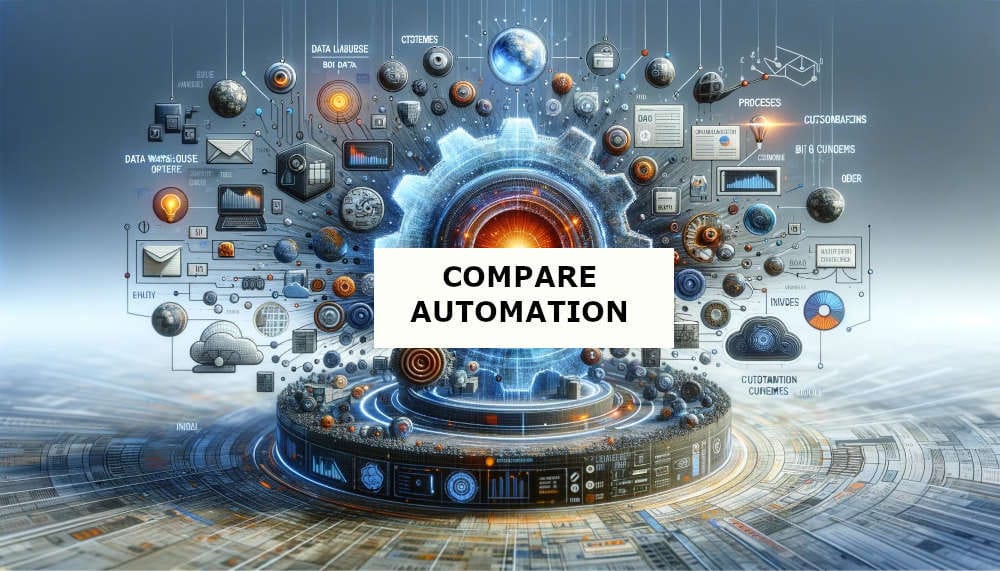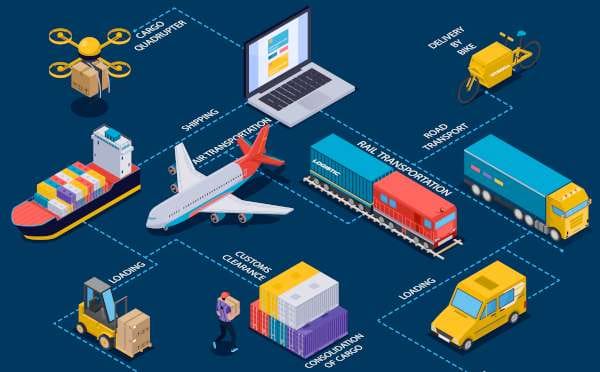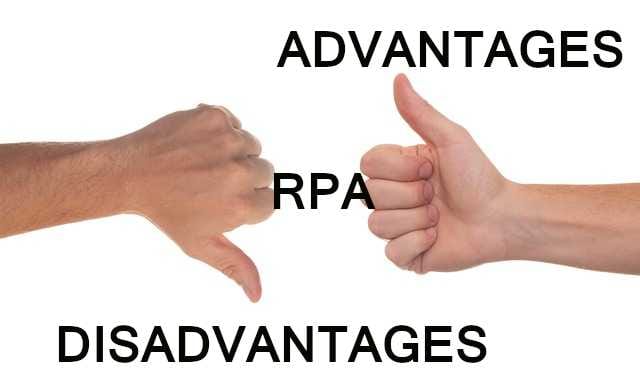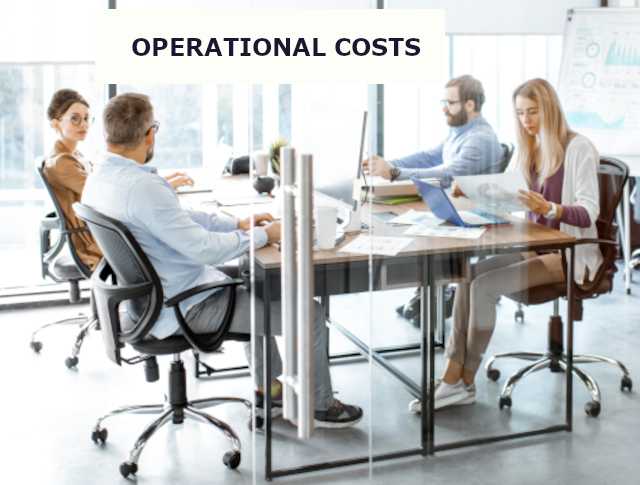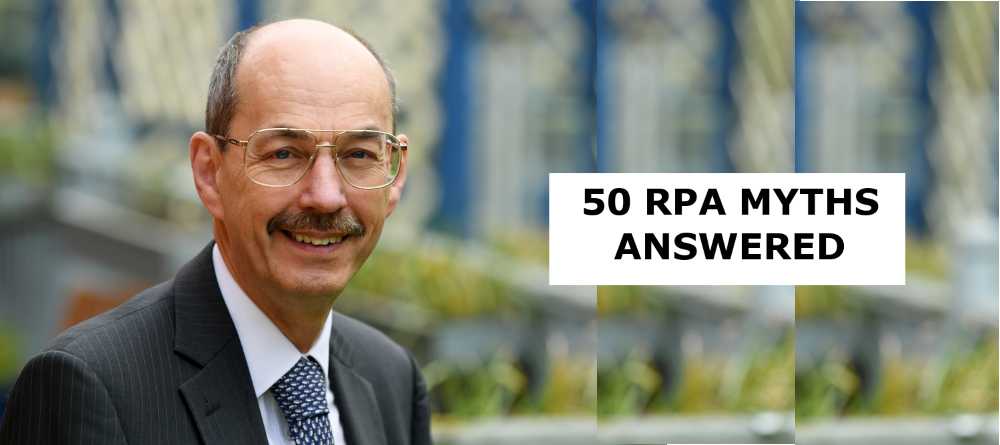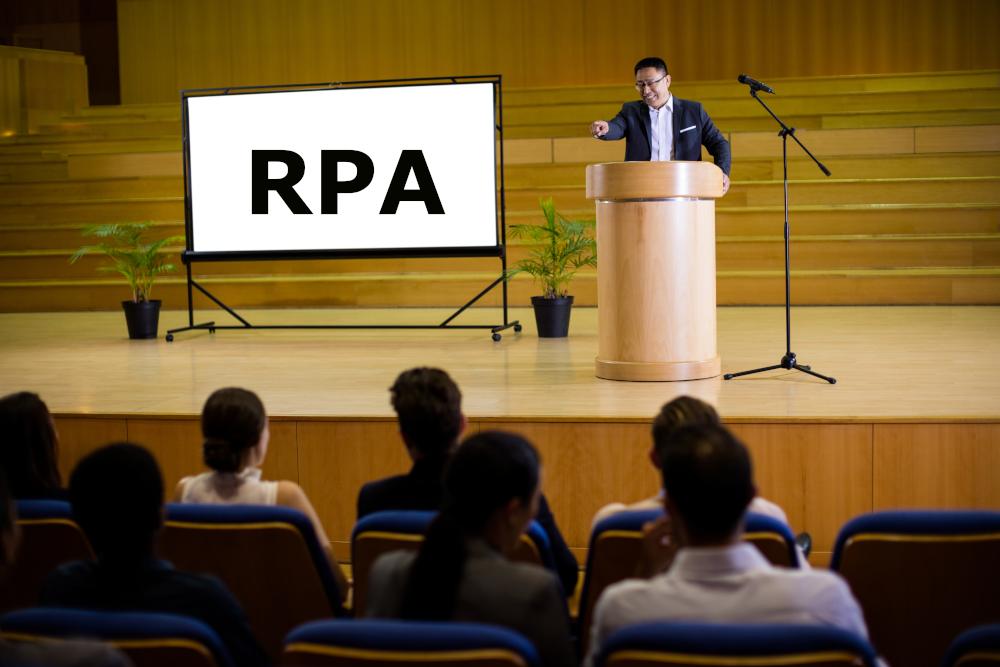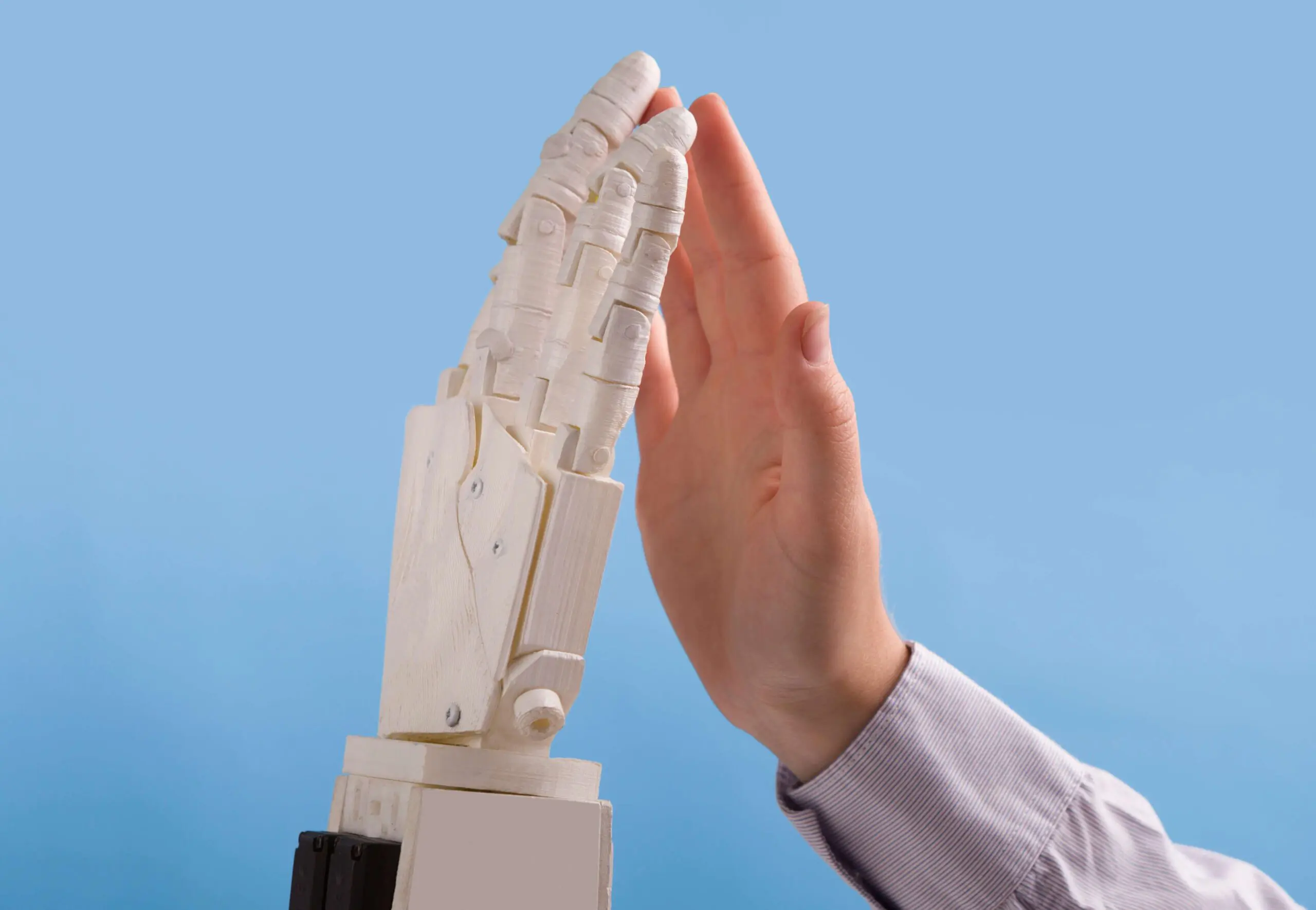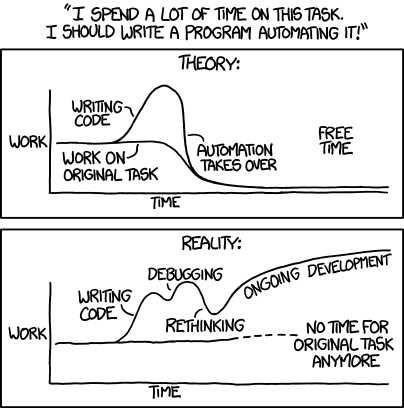RPA FAQ
RPA Frequently Asked Questions
The followinq questions are frequently asked during investigation into RPA and the implementation of RPA. If you have specific questions not covered by the following answers please contact us, we would be pleased to provide an answer as well as add it to this FAQ section. Ether Solutions believes that there are no “Daft” questions, so please ask.
There is no order of importance to the list. The questions are numbered simply for easy reference.
1. How does RPA works?
RPA is a software solution and does not involve physical hardware. It works by doing “Human Type” actions on predictable tasks like copying data from document to system (i.e. quotation to order), collating data, generating report etc. RPA can execute repetitive tasks that a human would otherwise do on a computer system. The technology has matured to a level where accuracy and speed are core features. It continues to evolve and simplify the effort to create and deploy solutions.
2. Is RPA very expensive?
There is a wide spectrum of RPA vendors and the price range varies according to the functionality as well as the complexity of the software. Solutions can cost a few thousand for simple solutions through to enterprise level budgets for global corporations.
3. Is it difficult to implement and maintain RPA?
There has been a lot of hype about RPA implementations. They can be deployed in sensible “Chunks” or they can be large projects with teams of people working on a delivery. Like every good business project, it is about managing risk, benefits and keeping focus on what will deliver a reasonable ROI – 80 : 20 Rule applies as much to RPA as anything else. The use of a Proof Of Concept (POC), can be an effective way to make sure there is alignment between what is possible and what is practical.
4. What are the benefits of using RPA?
RPA can save cost. RPA processes can run 24/7 and works extremely fast and accurately. This does not mean removing humans but often allowing them to sort out issues and add value. If the 80% standard is taken care of by an RPA robot, then human effort can be focused on the other 20%. RPA is best viewed as empowering a workforce to be able to do more and not as a means of replacing people.
5. Who can help me with RPA?
All major management consultancies have RPA practices. At Ether Solutions we can assist with the technical aspects but we know clients know their business activities better than any consultant.
6. What does the RPA acronym mean?
RPA is an acronym that stands for “Robotic Process Automation”. To implement an RPA solution, the RPA software watches the user perform a task in the application’s graphical user interface (GUI), and then provides a solution by repeating those tasks directly in the GUI using a software robot.
This simplifies the programming of the system and increases productivity while lowering cost. The software robot is also know as a “Bot”.
The software robot takes the specific example it has been shown and a developer can create the generic capability to perform the task with different data values.
7. What does RPA stand for in technology?
RPA stands for “Robotic Process Automatioon”. This is the technology that automates tasks that a person normally performs on a computer system by reading from the screen, typing on the keyboard and clicking & moving the mouse. The implementation uses a Software Robot or “Bot” to perform the activity.
Depending on the configuration, the software robot’s actions may or may not be visible on a physical screen.
RPA is often used with “Virtual Desktops” to perform activities where there is no user involvement. This is often called an “Un-Attended” process.
8. Why should I even care about RPA?
You should care about RPA because it is one of the fastest growing sectors of the technology industry. As RPA can increase your company’s productivity, efficiency and quality. Software robots can cost from £1 per hour making them a cost effect alternative to humans working on computer systems.
There are other benefits from the use of RPA that are described in the RPA Benefits infographic.
9. If RPA’s the next big thing, why haven’t I heard more about it?
RPA has been implemented by many large corporations around the world. Although the technology initially required high volume of activities to be processed in order to justify the costs, the products have matured such that solution are financially attractive to organisations of all sizes.
Ether Solutions has an ROI calculator for RPA which shows that in many scenarios the cost of a software robot (aka “Bot) starts at £1 per hour. As the technology becomes mainstream for the middle market sized companies it will become more widely known.
10. What’s the difference between RPA and macros and scripting?
In some ways they are very similar. Generally macros are considered as ways to perform a set of actions within an application.
For example, an Excel macro, works within an Excel spreadsheet. A script could be a “Windows” script that performs actions.
The script is deployed to a specific PC. RPA functionality varies by software product (e.g. UiPath, Automation Anywhere) but they can each do the activities of an Excel Macro and a Window Script.
RPA provides greater functionality, the actions can be across applications and not limited to a single application like a macro.
RPA provides the capability of reading information from screen displays, which is almost impossible for a scripting language which can only get “Response codes”.
11. What are some common ways RPA is being used now?
RPA has historically had strength in Finance departments, hence invoice processing, accounts payable, month end report, reconciliations, etc.
The technology has also been widely used in HR departments performing tasks around employee on-boarding, holiday management, GDPR requests, etc.
Other departments of Sales and marketing particularly use RPA with corporate CRM usage. Logistic departments use the technology for transport paperwork, licences, permits, etc.
12. What can a digital worker do?
A digital worker, also known as a “Bot” or software robot, is able to interact with computer systems in the same way that a person interacts.
The digital worker can read information displayed on a screen, type using the keyboard and perform mouse movement and clicks. It can do the same things a person would do at a computer, this means that it can be configured to perform repetitive tasks normally undertaken by a person.
Some of the advantages of using a digital worker is that it is about 10 times faster than a person and does not make human errors which at a typical level for repetitive work is 4%.
13. What are the various costs to consider when deploying an RPA digital worker?
There are a number of variables when considering costs.
– Software robot (digital worker) licence fees or subscriptions
– Infrastructure to host the software robot
– Consultancy to install and configure the software robot for the activities to be performed
– On-going support for the software robot, upgrades, etc.
– Manual activity to handle exceptions in the activities which are beyond the software robot capabilities
As well as costs, the benefits need to be considered. Ether Solutions provide an ROI calculator for RPA.
14. Do RPA projects typically take long to implement?
When RPA projects were first undertaken at Global corporations they were big projects, but the technology has matured rapidly and now implementations are quick.
Typically a Proof of Concept (POC) would be delivered in a few days. The projects are normally completed in a few weeks.
The usual approach is to start with a relatively small process for automation, this enables the infrastructure to be established and the organisation to adjust to the use of software robots. Subsequent implementations of additional robots can then build on that environment.
15. How do we monitor and manage digital workers?
Although it would be possible to implement a number of digital workers (aka “software robots”) as isolated discrete items, a co-ordinated approach is optimal.
After implementation there will be a need to support the software robots with software upgrades, a central approach to such software management is the most efficient. The typical licence fees / subscriptions are based on the number of digital workers therefore if the capacity for work in each robot is optimised, the overall costs can be minimised.
UiPath software includes an Orchestration product that provides the central management capability and delivers the capability to monitor the activity of the software robots.
16. What processes are suitable for RPA?
When examining a business process to determine if it is a suitable candidate for RPA a number of factors need to be considered.
Is it a repetitive task?
Does it only use digital information?
How are decisions within the task made?
Ether Solutions provides a process checklist to help with evaluation.
17. What is the difference between AI and RPA?
A lot of marketing by software vendors can blur the lines but they are different and complimentary capabilities.
Artificial Intelligence (AI) is the ability to determine an answer to a question, at least in its simplest definition. A typical AI product uses lots of data about a situation to determine what normally occurs in any of the possible scenarios. It finds patterns in the data. Once this model is established, when the AI is asked a question it uses this “Intelligence” to determine how to respond. The match will come with a “Confidence Factor”. This will never be 100%. Just like humans, AI works on an accuracy threshold. A simple example is where a collection of invoices to a company are analysed to create a model, then when a new invoice arrives the AI is able to determine that it is an invoice and therefore know how to extract the supplier name, supplier address, invoice amount, etc.
Robotic Process Automation (RPA) is the capability to perform actions that simulate a person working on a computer. For example, an RPA software robot could be configured to open an Outlook inbox, find new emails, download attached invoices from the emails, pass each invoice to AI and use the extracted information returned from the AI to update a finance system with the details from the invoice.
18. What training do staff need to collaborate with digital workers?
The way digital workers (aka software robots) are configured determines how staff can initiate them and how they interact with them.
For example, there could be an icon on the computer desktop to start a digital worker, or a combination of keys on the keyboard being pressed.
The input passed to the software robot and the actions it performs can all be configured. The actions undertaken by a software robot might be visible to a person working with the computer in that display may change and the person may have to wait for the actions to finish, or the software robot may complete its actions in the background with just a message being displayed on completion.
19. How will digital workers complement my human workers?
Digital workers (aka software robots) are good at performing repetitive tasks at speed and accurately. Such work is normally seen as mundane, dull and tedious by people.
As Digital Workers perform the routine work, it allows people to concentrate on higher value activities of dealing with exceptions, being creative, doing one-off activities, adding emotions such as empathy when engaging with others, actually being people and not acting like “Robots”.
20. Does the deployment of digital workers require changes to computing applications?
Digital workers interact with computer applications by simulating the actions of people.
The digital workers can use the same Graphical User Interface that person would use if they performed the actions.
As no changes are required to the applications, it makes possible for people or digital workers to perform the activity this means that there is no risk of compromise to the applications.
21. Can there be many digital workers?
As many Digital workers (aka software robots) as required can be implemented in a business. The challenge is using the capacity provided by each digital worker.
With a digital worker capable of working 24 hours a day, seven days a week and being a software robot it can interact with computer applications at 10 times the speed of a person.
Compared to person working 8 hours a day, Monday through Friday, a single digital worker has capacity to complete 42 times the work of a person!
Organising the work load for a digital worker and vendor licence restrictions can mean that this theoretical capacity is not often achieved but it does illustrate the potential.
22. What is a robot?
There are academic definitions but in “Robotic Process Automation” context, a software robot is code that is capable of simulating a person “Reading” from a computer display, typing at a keyboard as well as moving and clicking a mouse. It this ability to simulate together with the ability to follow a set of instructions that makes a software robot capable of performing a wide range of activities on computer applications using standard software such as browsers, Microsoft Outlook, Word, Excel and working with documents such as PDF files.
23. Why do I need a robot?
Software robots do what they are told. Robots are good at undertaking repetitive tasks when all of the logic in the processing is determined by value based decisions and all of the information is available in digital format (e.g. Email, Spreadsheets, Browser pages for CRM, ERP, Finance).
By using a software robot it is possible to “take the Robot actions out from Human workload”.
Typically this repetitive work is described as mundane, dull or “Boring” which means that people do not enjoy doing it.
24. Who creates a robot?
The software robot capability is provided by a number of software vendors. Ether Solutions works with UiPath which is widely regarded as one of the top three vendors.
The other vendors being Blue Prism and Automation Anywhere. Ether Solutions as a UiPath partner has consultants with the skills and knowledge to configure the UiPath software robot to perform the specific tasks required by a business user.
25. Can anyone create a robot?
Several of the software vendors such as UiPath, provide a wide range of education material for free. This enables anybody who is interested to invest the time and learn about the capabilities of software robots and how to configure them to perform business tasks.
Consultancies like Ether Solutions have staff with knowledge and experience of performing the development and implementation of software robots.
There is a trend in the industry to provide capabilities for business users to be able to create “Simple” robots without undertaking extensive training.
UiPath has it’s StudioX capability to provide such features to business users.
26. When is it effective to create a robot?
Software robots do what they are told. Robots are good at undertaking repetitive tasks when all of the logic in the processing is determined by value based decisions and all of the information is available in digital format (e.g. Email, Spreadsheets, Browser pages for CRM, ERP, Finance).
It takes effort to create a robot and this needs to balance against how often the robot can execute and save work for a user.
The more often the robot can be used, the more effective for the business to create a robot.
This is why the usage of software robots started at large global companies who undertake the volume of activities to make automation with a robot cost effective.
Now that the software robot technology has matured the, it is easier and cheaper to create software robots hence the situations at smaller businesses with less volume can be addressed.
27. Will a software robot take my job?
Software robots will impact many jobs. They are often called “Digital Workers” as they can perform tasks currently undertaken by people. Software robots are very good at doing repetitive work, but they cannot do everything.
Exception handling where judgements are required are better handled by people.
With the growing use of Artificial Intelligence (AI) being used alongside software robots, further automation is possible but the complex will still need to be performed by humans.
Experience has shown that the introduction of software robots improves the working activities for staff. The knowledge staff have about the business is able to be better used and the jobs become more interesting.
28. What are the advantages of using a robot?
A software robot (aka “Bot”) can perform repetitive tasks both quickly and accurately. Typically a robot is 10 times as fast a human operating the same actions on computer applications.
For repetitive and mundane work, humans typically make about 4% errors in any reasonable quantity of work. A robot will just repeat its actions with 100% accuracy.
Although many Robotic Process Automation (RPA) initiatives start by thinking about cost reduction, experience shows the biggest value if freeing up staff time to do better quality work.
Software robots deliver a large capacity for work (1 robot capacity is equivalent to 42 staff) and can offer costs of £1 per hour which makes them an attractive replacement for people doing low value work.
29. How is RPA different from automation?
RPA, Robotic Process Automation, provides the ability to simulate the work undertaken by a person when using one or more computer applications.
The software robot activity results in the same outcome as if a person had completed the work. Automation can be achieved without a robot by making changes to a computer application which also removes the need for human involvement, but total removal of humans through automation is very difficult when multiple computer applications are parts of the process (e.g. Microsoft Outlook, CRM and ServiceNow).
30. What does an RPA developer do?
RPA software provides generic capabilities such as the ability to read Outlook emails, the ability to update Salesforce CRM, etc.
It is the RPA developer who creates the instructions for the software robotic deployed in a Robotic Process Automation to perform a specific task in a specific manner.
To achieve the deployment an RPA developer will use the “Designer” tools of the software to provide some configuration and create detailed instructions in the form of script code.
For UiPath, the designer tool is called “Studio”.
31. Does RPA need coding skills?
RPA software vendors such as UiPath have been enhancing their products to provide an option for business users to create robots. UiPath have StudioX which provides a range of functionality that can be used to define activity for a robot without the need for writing code. The more complex the activity that the robot is required to undertake the greater the need for the development of code by specialist consultants like the team at Ether Solutions.
32. How easy is it to get started with RPA?
There are two aspects to implementing RPA. The first is the business analysis activity to identify the process that is to be automated, making sure that it is a suitable candidate.
Ether Solutions provides a process checklist that helps ensure the process is suitable for RPA.
The second aspect is the software robot technology that requires installation, configuration and development of the script to complete the business task. Ether Solutions consultants provide this capability.
33. What does an RPA business analyst do?
An RPA business analyst works with the business teams to identify and define a business process that is suitable for automation. The tasks will include setting the scope for the automation, defining both “Happy path” processing and exceptions.
As well as looking at the specifics of the automation a business analyst is usually also looking at the impact of the automation in terms of the rest of the business operation. This will include how people will interact with the Robot, how exceptions will be handled, etc.
34. What is an RPA Center of Excellence (CoE)?
An RPA Centre of Excellence is often created by organisations as part of the deployment of Robotic Process Automation (RPA) across a business.
It is a group of individuals who have the knowledge and experience of creating software robots to automate a business process, as well as the understanding of how to effectively implement the solution within a business from a change management perspective.
This central group can capture the lessons learnt from each implementation, the correct role for standards setting and the overview of implementation strategy, to work with individual business areas on their specific automation requirements.
35. What is an RPA Operation Center (RoC)?
As software robots are deployed and tasks defined for the software robots to perform, there is an on-going need for monitoring and management of the robots.
A RPA Operation Center is the team tasked with the on-going operation of the robots.
For reasons of segregation of duties this group is often different from any of the teams developing the robot scripts that define the execution. The focus is on the operation rather than the business functionality.
The team are typically responsible for software upgrades, implementation of security policies, resilience and recovery, performance and monitoring.
36. What does the term AI mean?
Artificial intelligence (AI) is a broad concept referring to a machine that mimics cognitive functions that humans associate with the human mind, such as learning, problem solving and reasoning. There is now a lot of marketing hype around the term AI where it is used for less sophisticated challenges such as providing a mechanism for questions and answers.
37. Are there different types of AI?
Artificial intelligence (AI) is commonly categorised as (1) Artificial Narrow Intelligence (ANI). Sometimes referred to as Weak AI, ANI specializes in one area. (2) Artificial General Intelligence (AGI). Sometimes referred to as Strong AI, or Human-Level AI, AGI refers to a computer that is as smart as a human across the board. (3) Artificial Superintelligence (ASI), an intellect smarter than the best human brains in practically every field. Today nearly all products and solutions advertised as AI are of the ANI category, that is they are built to solve a specific problem or a specific type of problem.
38. How do RPA software robots enable AI?
Leading RPA tools such as UiPAth are pre-integrated with AI platforms, enabling AI decision making to be integrated into existing business processes. The RPA software robots automate the delivery of the question or problem to the AI software and use the output from the AI analysis to complete the business process.
39. How do RPA software robots enable ML?
ML – Machine Learning is process which enhances an AI analysis of a problem by providing feedback on the acceptance of the result. RPA software robots are an effective way to deliver the problem to AI software and to use the result. For ML to be implemented, the subsequent acceptance of the AI result needs to be capture in the business process and that acceptance information to be in a Feedback Loop that is used by the ML software to determine how to improve the AI model to produce better quality results. As RPA software robots are working with the result of the AI analysis they are also well placed to deliver the acceptance information to the ML software.
40. Do RPA software robots use Natural Language Processing (NLP)?
Natural Language Processing (NLP) is a way for computers to analyse, understand and derive meaning from human language in a smart and useful way. This is achieved by examining the text to determine the “Intent”, the “Objects” and “Actions”. RPA software robots can use NLP engines to examine information and then use the results to determine the actions for a business process.
41. Are Chatbots the same as RPA software robots?
Chatbots use Natural Language Processing (NLP) to understand and construct a dialogue with a person, typically through a web site. Once a Chatbot determines that an action is required it then passes the information to an RPA software robot to perform that action through the execution of a business process. They are different and perform different functions.
42. Are there any Open Source RPA software robots?
Yes, as the RPA market has matured a number of Open Source RPA software robot solutions have become available including “G1ANT” and “Robin”.
43. Will Microsoft’s announcement of an RPA software robot change the market?
By Microsoft enhancing and re-positioning its “Flow” product as an RPA solution, it adds credibility to the RPA market and sets a bench mark that all the independent RPA vendors will need to exceed.
44. What is Intelligent Process Automation?
This is the use of Artificial Intelligence (AI) being part of automation of a process, this combination of AI with RPA is sometimes called “Intelligent Automation” or “Cognitive Automation”. Rather than being strictly value based decisions determining how an automated process operates, AI is used to make the decisions which allows for more complexity in the criteria. In any implementation, the AI model will need to be trained on the correct decisions based on all the available factors, so that when it is presented with values for the factors of a new case it is able to advise on the right decision. There are some things which people do not immediately realise require AI, such as Document Recognition. This is a key requirement in many processes but without AI capability it can be difficult to recognise similar documents.
45. What is HyperAutomation?
As Robotic Process Automation is about using software robots to replace manual repetitive tasks on computer applications, Hyperautomation is the implementation of multiple technologies such as AI, RPA and Machine Learning (ML) to automate the majority of processes only using “Humans in the loop” where it is absolutely necessary. The business processes are completed but the amount of human involvement is minimal. This could be described as maximum automation.
46. How long does it take to implement RPA?
Of course it depends on the processes being automated. The related question of how long does it take to automate a process has the same answer.
For practical reasons, RPA should initially be used to implement the “Happy Path” activity on a simple process. By taking this approach the RPA process from initial scoping thoughts to execution implementation can be short, in many cases a few days (1 to 10).
There may be separate activity to deploy the robot software into a development and production environment but that should be counted independently of the process related activity.
This rapid development allows experience of robot operation to be gained, which can feed into a plan and decisions about how to enhance the “Happy Path” to cope with more exceptions or to use the development activity to provide “Happy Path” solutions for other business processes.
Automating parts of complete business processes may not be perfect, but such an approach can deliver benefits quickly and is more aligned with “Agile” style of repeated, incremental delivery, of modern IT than some of the advocates of large project solutions. Each development iteration (aka Sprint) should be short, typically 10 days, then allowing for separate testing and release controls, it is normally possible to delivery enhanced RPA software robots every 20 days or less.
There is an important aspect to consider with an RPA implementation, that is it is automating a process which is already being undertaken. This is different from the delivery of a new IT system. The impact on users will also be different in that will be able to stop doing some things and not needing to learn new skills in most cases..
47. Who is RPA for?
RPA is for automating business processes that are performed on computer systems. Rather than have people working on repetitive business processes, software robots are deployed to perform the tasks of simulating reading from the screen, simulating typing on the keyboard and simulating mouse clicks. The simulation by the robot removes the effort from the person. The activities being automated could include anything a person does on the computer but to be effective it must be repetitive. RPA was initially adopted by global corporations as they had the volume of work to justify the investment but the technology has matured and become affordable for use by SME, SMB (mid-market) and large national businesses.
48. Who is using RPA?
RPA was initially adopted by global corporations as they had the volume of work to justify the investment but the technology has matured and become affordable for use by SME, SMB and large national businesses. Although the largest uptake of RPA has been in Finance sector, the technology can work for any business which is why there are now users in every sector from Government, Accounting, Distribution, Energy, Insurance, Legal, Logistics, Manufacturing, Pharmaceutical, Retail, Supply Chain, Services industries, Telecoms, Transport, etc.
49. What can RPA do for you?
RPA is designed to automate business processes that are performed on computer systems, it is used to release manual effort and hence improve productivity. As software robots perform the repetitive work rather than humans, human error is eliminated which improves the quality of the outcome. With RPA software robots capable of working 24 hours a day, 7 days a week, the potential to re-structure the organisation of work can be considered.
50. Is RPA more trouble than it is worth?
RPA is designed to automate business processes and can deliver significant benefits. The best results are achieved when the process is stable and the computer applications that the robot is interacting with are not subject to change. There will be a Support cost to keeping the RPA software robots updated to relfect any changes in the business processes and any variations in computer applications being used. If the RPA design is robust and appropriate parameters have been included in the design, the cost of support should be no greater than other IT solutions. RPA will generally deliver more benefits than issues. It is important to remember that humans operating business processes make errors that need correction, so any issues from software robots should be considered in that context.
Ether Solutions use UiPath for RPA solutions as it is rated by all the industry analysts as some of the best functionality available.


